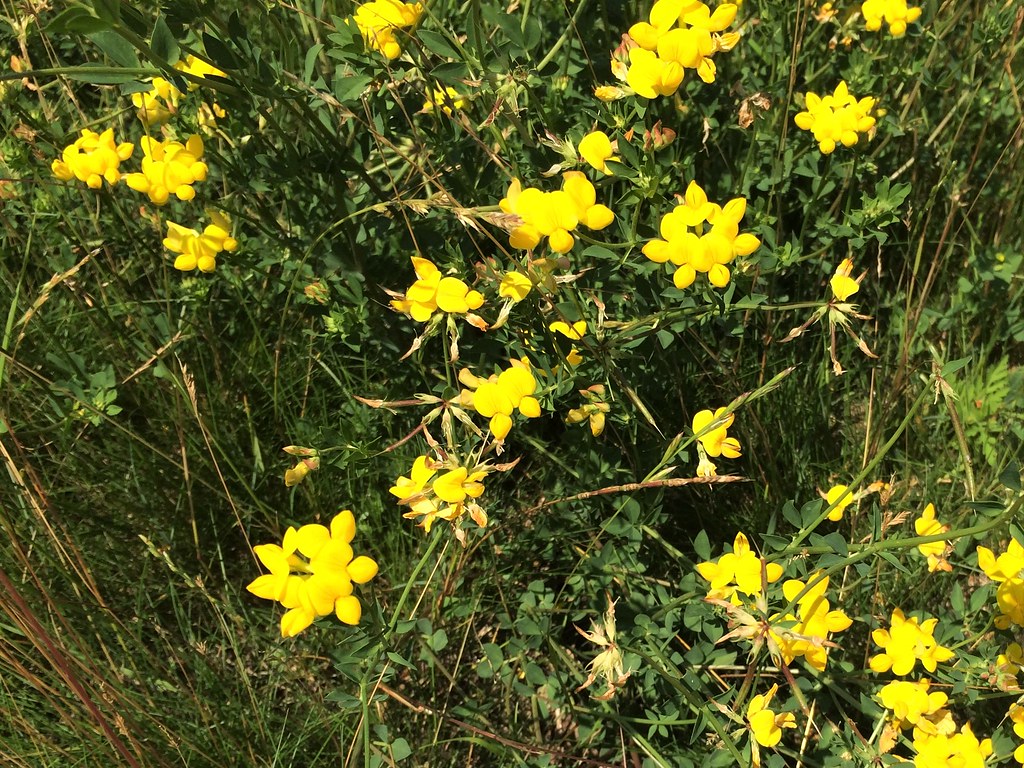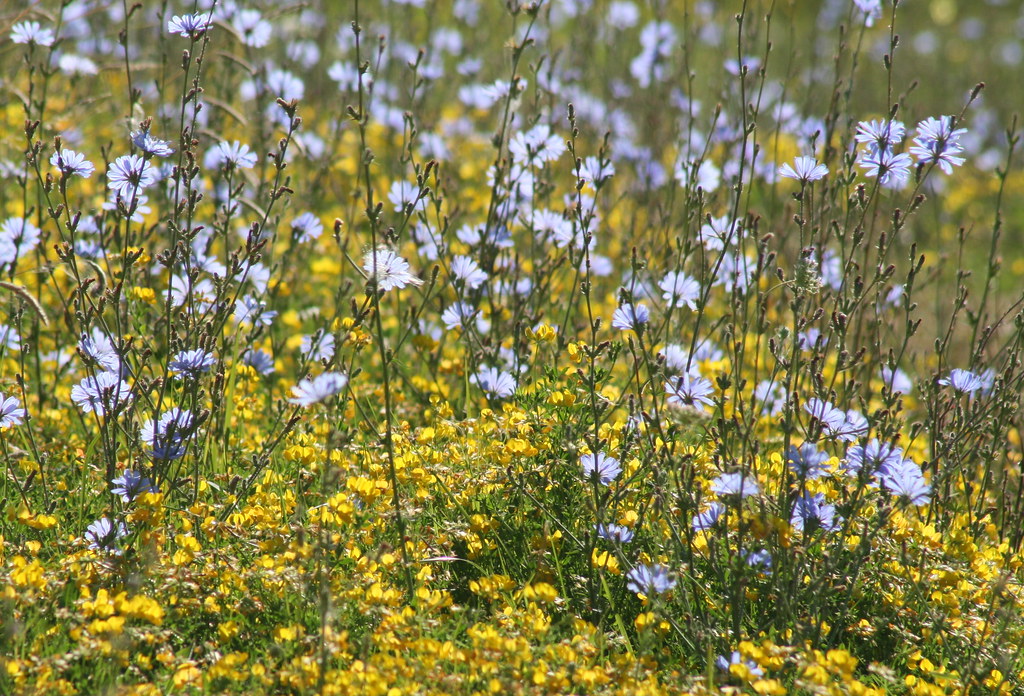If you’re a wildlife enthusiast or a hunter looking to attract deer, you might be wondering about the benefits of planting birdsfoot trefoil.
This perennial plant is known for its adaptability to poor soils and drought conditions, making it a popular choice in various regions.

Deer do eat birdsfoot trefoil, especially during spring and summer when its nutritional value is at its peak.
It’s particularly advantageous for areas where other forage crops may struggle to grow. As a bonus, it can serve other wildlife too, like turkeys.
For those considering adding birdsfoot trefoil (also known as Lotus Corniculatus) to their food plots, it’s important to note that while it thrives in challenging soils and offers longevity, it does require some management to maximize its benefits.
By including it in a mix with clover or other legumes, you can create a rich, appealing habitat that keeps deer coming back.
Do Deer Eat Birdsfoot Trefoil?
Deer do eat birdsfoot trefoil. This plant is known to attract not just deer but also rabbits and other herbivores. Its foliage provides a good source of nutrition.
Planting birdsfoot trefoil in your food plots can be beneficial.
Deer may lightly browse on it in the fall and become more interested in the spring and summer. This seasonal preference makes it a versatile choice for year-round plots.
Birdsfoot trefoil is often mixed with clover to enhance its attractiveness to deer. Planting about 3 lbs. per acre in a mixture can yield better results.
This plant is drought-tolerant and can last a long time, sometimes up to 20 years. This makes it a sustainable choice for long-term food plots.
It’s important to manage birdsfoot trefoil properly.
It may require more management compared to other plants like alfalfa.
Despite some claims that it may not always do well in uncontrolled environments, many hunters and wildlife enthusiasts find it effective for attracting deer.
Is Birdsfoot Trefoil Deer Resistant?

Birdsfoot trefoil is sometimes considered deer resistant, but this can vary. Deer tend to prefer other forage, especially if those are more palatable.
Still, birdsfoot trefoil provides certain qualities like being drought resistant. This can make it a useful plant for areas with poor soil and low water availability.
Some people have noticed that deer don’t eat birdsfoot trefoil as much as other plants. This lower palatability can help the plant last longer in areas with high deer populations.
In some cases, however, you may find deer nibbling on birdsfoot trefoil if other food sources are scarce.
The plant’s perennial nature and ability to fix nitrogen make it beneficial in mixed food plots for deer.
If you’re looking for a durable plant for food plots that can withstand less favorable conditions, birdsfoot trefoil might be a good option.
How To Keep Deer From Eating Birdsfoot Trefoil

If you have a food plot, managing deer can be tricky. Here are some tips to protect birdsfoot trefoil from deer.
Fencing
- Install a fence around your food plots.
- Use high fences (at least 8 feet) to keep deer out.
- Electric fences are also effective.
Distraction Plants
- Plant other attractive food sources to divert deer.
- Clover and alfalfa are good choices.
- Place these plants away from your birdsfoot trefoil.
Repellents
- Apply deer repellents around your trefoil.
- Choose from chemical sprays or natural options like garlic.
- Reapply regularly for best results.
Companion Planting
- Mix less attractive plants with your trefoil.
- This can discourage deer from focusing on your main crop.
- Ryegrass and fescue can work well.
Grazing Management
- Use controlled grazing systems.
- Rotate different sections to limit deer access.
- Implement seasonal grazing to reduce pressure on trefoil.
Erosion Control
- Plant trefoil in erosion-prone areas.
- Harder for deer to reach these spots.
- Helps in preserving soil integrity.
Fertilization
- Keep your birdsfoot trefoil healthy with proper fertilization.
- Healthy plants are less susceptible to browsing.
- Follow recommended guidelines for best results.
Will Birdsfoot Trefoil Grow Back After Being Eaten By Deer?

Birdsfoot trefoil can recover and regrow even after being eaten by deer. Proper care and maintenance will ensure that your trefoil remains healthy and productive.
Steps To Help Your Birdsfoot Trefoil Recover
Reseeding and Germination
- After heavy feeding by deer, you should reseed the affected areas.
- Birdsfoot trefoil produces small seeds that germinate well if given proper soil conditions.
- Ensure you use a good seeding rate, which can vary but generally should be around 4 to 8 pounds per acre.
Yellow Flowers and Longevity
- Birdsfoot trefoil has bright yellow flowers that bloom from late spring to late summer.
- These flowers are not just pretty but also a sign of a healthy plant.
- Keep an eye on the flowers; their presence indicates the plants are strong and can recover.
Establish a Robust Root System
- A well-established root system is key to recovery.
- Birdsfoot trefoil has a strong taproot, which helps it regenerate even after grazing.
- Make sure soil conditions are optimal to encourage deep root growth.
Understanding Deer’s Diet and Birdsfoot Trefoil
Deer consume a variety of plants, and birdsfoot trefoil can be a valuable addition to their diet, especially given its perennial nature and nitrogen-fixing capabilities.
Seasonal Variations In Deer’s Diet
Deer typically adjust their diet based on seasonal availability.
In spring, new growth such as birdsfoot trefoil, also known as Lotus corniculatus, is tender and nutritious, making it a desirable forage option.
During summer, the prostrate growth habit and persistent bloom of birdsfoot trefoil provide consistent feed. It grows new leaves, making it one of the few persistent forages during dry spells.
Come fall and winter, deer shift to hardy perennials and other plants like clovers.
Birdsfoot trefoil can still serve as a reliable source of forage due to its drought tolerance and longevity, aided by rhizomes and its low-growing characteristic.
What About Other Wildlife and Birdsfoot Trefoil?
Birdsfoot trefoil isn’t just favored by deer. Many other wildlife species benefit from it too.
Cattle and other livestock find birdsfoot trefoil to be a nutritious forage. It provides high-quality hay that supports their health.
Pollinators such as bees and butterflies are attracted to birdsfoot trefoil. The plant offers nectar and pollen, crucial for these insects.
The deep roots of birdsfoot trefoil help prevent soil erosion. This makes it an excellent choice for planting along old logging roads and other vulnerable areas.
Wild turkeys also enjoy birdsfoot trefoil. They often join deer in feeding on these plots.
When mixed with perennial grasses like timothy or Kentucky bluegrass, birdsfoot trefoil helps fix nitrogen, enriching the soil.
Birdsfoot trefoil can be combined with other plants like chicory, ladino clover, and red clover. This mix provides varied and extended forage quality throughout the season.
Due to its tolerance of low-pH soils and drought, birdsfoot trefoil thrives in less-than-ideal conditions.
If you’re looking to attract and support a variety of wildlife on your land, birdsfoot trefoil is a great option.
